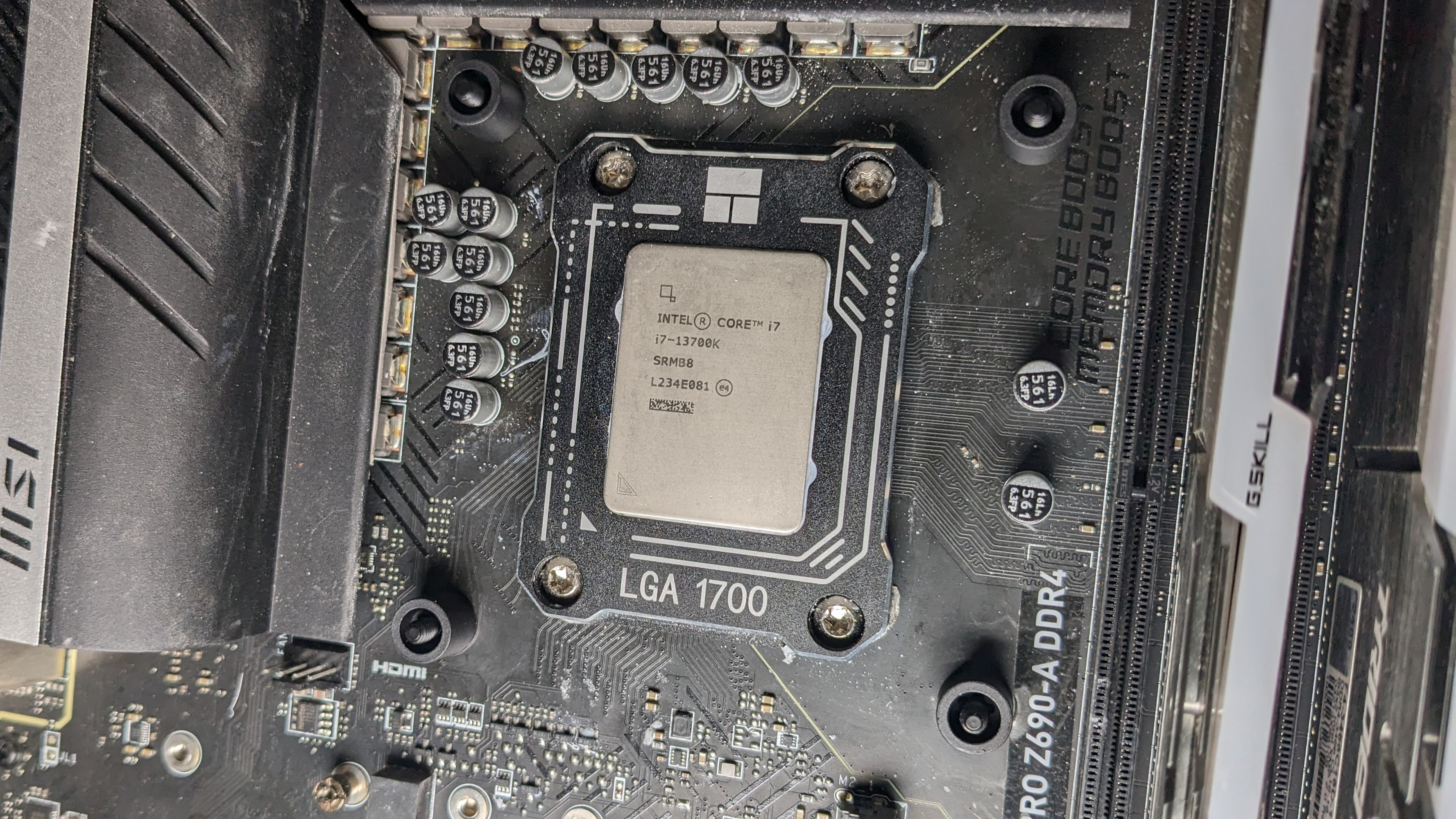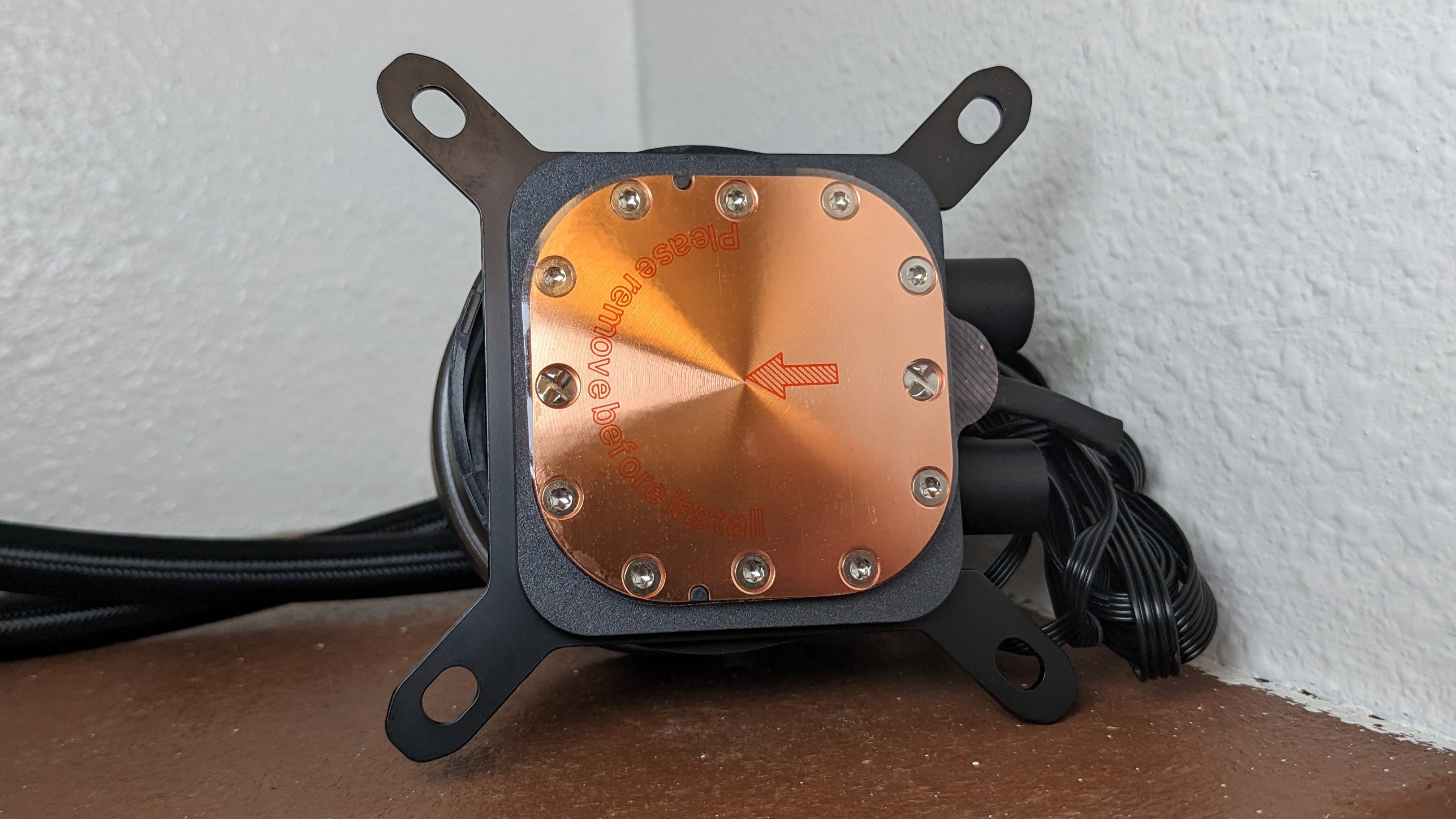Over the past two years, as high-end CPUs have become more thermally demanding, coolinpng manufacturers have released upgraded liquid coolers to more effectively dissipate the heat heat. This summer in particular has seen the release of many impressive liquid coolers from Cooler Master, DeepCooland other competitors.
Today we’re looking at Lian Li’s latest 240mm AIO, the Galahad II Trinity Performance. Does Lian Li’s new 240mm AIO stand out from the crowd and earn a spot on our Best AIO Coolers list? Its larger 360mm sibling is already there. Will Lian Li take the top spots in both size categories? We’ll have to put it through testing to say for sure. But first, here are the cooler’s specifications, direct from Lian Li.
Specifications
| Cooler | Lian Li Galahad II Trinity Performance |
| MSRP | $119.99 USD |
| Installed Size | 277.5mm (L) x 119.2 mm (W) x 52mm (D) |
| Radiator Material | Aluminum Single Wave Fins |
| Pump Seed | 3200 RPM |
| Socket Compatibility | Intel Socket LGA 115x/1200/1700 AMD AM5 / AM4 |
| Base | Copper |
| Max TDP (Our Testing) | ~250W on Intel i7-13700K |
| Warranty | 5 years |
Packing and Included Contents
The GA II Trinity 240 arrives in a package similar to other coolers of it’s class. The inner contents are surrounded by molded cardboard and plastic coverings for the protection of the contents during shipping.
Included with the package are the following:
- Two 120mm fans, pre-installed
- 240mm radiator
- Thermal paste and application tools
- PWM splitter
- Mounts for all modern CPU sockets (including AM5 & LGA1700)

LGA 1700 Cooler Installation
Installation of Lian Li’s 240mm AIO is simple on Intel LGA 1700 systems.
1. I would advise securing the radiator prior to other installation steps. It makes the rest of installation easier, at least in mid-tower and larger cases.

2. Intel users begin by pressing the backplate against the motherboard and secure it by screwing in the mounting standoffs from the front side of the motherboard.

3. Apply thermal paste to the CPU, and then place the CPU block against the motherboard and secure it with the included screws.

4. Apply thermal paste to the CPU and then place the CPU block against the mounting bars, secure it with the included thumbscrews.
5. Connect the PWM and ARGB headers to the motherboard.

Features of Lian Li’s Galahad II Trinity 240
⋇ Large Copper contact plate

The GA II Trinity 240 features a large copper CPU contact plate with significant revisions compared to previous-generation coolers from Lian Li. The skived fins have an increased spacing to prevent build-up of internal debris, and the height and thickness of the fins have been improved. Additionally, a trench down the middle of the skived fins has been implemented for better heat dissipation of the coolant over the copper plate.

The seal for the copper cold plate has also been improved, with straighter pathways for reduced turbulence and increased airflow.

⋇ Full RAM compatibility
As the CPU block does not impede or overhang the DIMM slots on a motherboard, all sizes of RAM – no matter how tall – are compatible with this cooler.

⋇ Multiple CPU block options

The CPU block has three choices for customization out of the box. The default style is an ARGB Infinity Mirror.

You can replace the large infinity mirror with the opaque diffused lighting ring. When this attachment is used, the center can be replaced with either a small infinity mirror or another diffused lighting attachment.

⋇ Sleeved tubing with increased width
The inner diameter of the water tubes has been increased from 5.8mm to 7mm, increasing the total volume of liquid by roughly 20%, which allows for better heat absorption.

The rubber tubes of the unit are reinforced and protected with fine sleeving which also looks good. Lian Li includes a leather cable management tie to keep the tubes tidy.

⋇ 27mm thick radiator
The 240mm Galahad II Trinity has a standard 27mm thick radiator, for a total thickness of 52mm when you include the fans.

⋇ Two 120mm FDB fans
There’s more to a cooler than just the heatsink or radiator. The bundled fans have a significant impact on cooling and noise levels, as well as the cooler’s looks.

Like the fans included on the previously reviewed EKWB CR360 and Lian Li’s Galahad II Trinity Performance, the fans here feature unique connections that simplify cable management by converting PWM and ARGB connections into a single header inside a micro-fit 8-pin connector that has a similar form factor as CPU power connections. This results in a more secure connection with less cable management to worry about.
| Model | Lian Li Galahad II Trinity Performance 240 AIO |
| Dimensions | 120 x 120 x 25mm |
| Fan Speed | 300- 2450RPM |
| Air Flow | Up to 79.9 CFM |
| Air Pressure | Up to 3.26 mmH2O |
| Bearing Type | Fluid Dynamic Bearing |
| Lighting | ARGB |
| MFFT | Unlisted |
⋇ Optional software control
Manufacturers of AIO cooling systems often fall into one of two extremes when it comes to cooler control: Either they force you to use bloated software to control the device, or they don’t include any software and rely only on motherboard PWM and ARGB controls.
With Lian Li’s Galahad II Trinity Performance, you have a choice. You can use the default motherboard controls if you prefer, but the company also offers an optional download of the L-Connect3 software for a more customized experience.
This software offers in-depth lighting and pump/fan speed customization options, with the ability to control other compatible ARGB devices. Ironically, you can also return control of these options to the motherboard with “MB Sync” option within the software.
LGA1700 Socket Bending
Note there are many factors other than the CPU cooler that can influence your cooling performance, including the case you use and the fans installed in it. A system’s motherboard can also influence this, especially if it suffers from bendingwhich results in poor cooler contact with the CPU.
In order to prevent bending from impacting our cooling results, we’ve installed Thermalright’s LGA 1700 contact frame into our testing rig. If your motherboard is affected by bending, your thermal results will be worse than those shown below. Not all motherboards are affected equally by this issue. I tested Raptor Lake CPUs in two motherboards. And while one of them showed significant thermal improvements after installing Thermalright’s LGA1700 contact frame, the other motherboard showed no difference in temperatures whatsoever! Check out our review of the contact frame for more information.
Testing Methodology
Modern high-end CPUs, whether Intel or AMD, are difficult to cool in intensive workloads. In the past, reaching 95C+ on a desktop CPU might have been a cause for concern – but with today’s processors, this is considered normal operation. Similar behavior has been present in laptops for years due to cooling limitations in tight spaces.
All testing is performed at a 23C ambient room temperature. Multiple thermal tests are run on each CPU to test the cooler in a variety of conditions, and acoustic measurements are taken with each result. These tests include:
1. Noise normalized testing at low noise levels
2. “Out-of-the-box”/default configuration thermal and acoustics testing
a.) No power limits enforced
b.) Because CPUs hit Tjmax in this scenario, the best way to compare cooling strength is by recording the total CPU package power consumption
3. Thermal and acoustics testing in power-limited scenarios
a.) Power limited to 175W to emulate a medium-intensity workload
b.) Power limited to 125W to emulate a low-intensity workload
The thermal results included are for 10-minute testing runs. To be sure that was sufficiently long to tax the cooler, we tested both Thermalright’s Assassin X 120 R SE and DeepCool’s LT720 with a 30-minute Cinebench test with Intel’s i9-13900K for both 10 minutes and 30 minutes. The results didn’t change much at all with the longer test: The average clock speeds maintained dropped by 29 MHz on DeepCool’s LT720 and 31 MHz on Thermalright’s Assassin X 120 R SE. That’s an incredibly small 0.6% difference in clock speeds maintained, a margin of error difference that tells us that the 10-minute tests are indeed long enough to properly test the coolers.
Testing Configuration – Intel LGA1700 Platform
| CPU | Intel Core i7-13700K |
| Comparison Coolers Tested | BeQuiet! Dark Rock Pro 4 Cooler Master Master Air MA824 Stealth Cooler Master Hyper 622 Halo Cooler Master Master Liquid Core 360L Cougar Forza 85 Essential DeepCool Assassin IV DeepCool LT720 EKWB Nucleus CR360 Lux |
| Motherboard | MSI Z690 A Pro DDR4 |
| GPU | Intel ARC A770 LE |
| Case | Be Quiet! Silent Base 802, system fans set to speed 1 setting. |
| Monitor | LG 45GR95QE |
| PSU | Cooler Master XG Plus 850 Platinum PSU |








